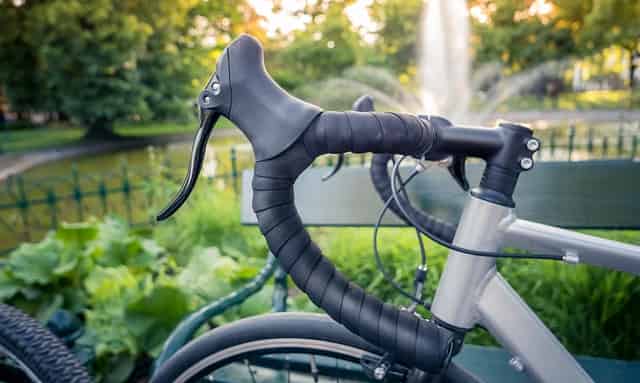So you’re looking for a bike, but you don’t want a one trick pony. Maybe your tours doesn’t consist of only roads, or you need a versatile bike that can go anywhere and be comfortable to ride no matter the distance.
Hybrid Bikes and touring bikes are both ideal rides for folks who need a bike that can do a little bit of everything. Hybrid bikes bring some of the best elements from road bikes and mountain bikes.
They’re comfortable, durable, and you can ride them almost anywhere. A touring bike is still a road bike at the end of the day, but it comes with multiple components and a sturdy body that make it a better fit for commuters.
Both of these bikes come with a wide range of price points and are highly customizable to the needs of the individual rider. One of the key differences lies in the touring bike’s reliability on longer rides and a hybrid’s utility on a lot of different types of terrain.
If you’re in need of a bike that can fill a couple of different roles, one of the bikes will have the answer you’re looking for. Let’s take a more in-depth look at the pros and cons of each bike.
Hybrid vs Touring Bike: Which is The Right Bike For You?
Picking the best choice for biking is crucial whether you want to run some errands or explore the world on your bike. Both hybrid and tour bikes are compatible for their respective operations.
They both came with bicycle racks to hold and carry weight and have durable frames that can even withstand prolonged or rough use. However, there are a few things that could grant one bike an edge.
For instance, the straight bars and narrower tires make a hybrid better for the shorter to medium distance riding. They are exceptionally well for commuting and short to medium distance travel.
When it comes to the long distances and heavier loads that define touring, a tour bike has the advantage.
If you want to go on for a 10-15 mile ride, choosing the hybrid bike is the safest and finest decision. Similarly if you plans to travel mostly off-road or through dusty plains using hybrid bike would be better.
But if you love to explore the world, choosing a bike with suitable tires can give you maneuverability. A tour bike that can hold a grip on every surface and bear heavy load can give you a fantastic experience exploring.
What is a Touring Bike?
As the name implies, a touring bike is designed for longer treks. Where your everyday road bike is designed to be light and swift, touring bikes are designed to be sturdy, comfortable, and modular.
Most touring bikes come in a steel frame with room for many different mounts to haul whatever cargo you’re bringing with you.
Regular road bikes would feel unbalanced when taking on the same load and thus are not very well suited to longer adventures outside of where you live.
Touring bikes also come with low gearing that makes it easier to carry your equipment and bags up steep terrain and wider tires that are usually associated with mountain bikes.
These bikes aren’t just meant for long trips, however. You can also use this bike to go grocery shopping or cycling as it can carry a lot of bags and is pretty weather resistant.
Most touring bikes will come equipped with disc brakes that offer a lot more braking power as compared to your standard v-breaks. They also includes added benefit of being able to weather harsher conditions than v-brakes.
If you want even more protection against poor weather, touring bikes can also easily mount mudguards that’ll keep you dry, cozy, and away from the mud.
You can expect many touring bikes to come with drop bars, but that being said, many of them come equipped with other handlebars designed to provide more comfort and offer more different hand positions.
Advantages and features
If you are looking to carry some baggage and goods on a bike tour, then touring bikes can give you all the comfort you can expect from it.
Most bike riders prefer touring bikes for a long journey, which offers a relaxing experience on a trip. Touring bikes are lightweight bikes that give you an easy maintenance cost while keeping them.
The primary reason why most bike riders choose touring bikes is that it is inexpensive compared to mountain bikes. You can get a touring bike with comfort in your pocket.
Also, you don’t have to find a repair shop for the repairs.
You can repair your touring bike without much equipment, which gives you hassle-free operations on a long trip. Their manufacturers prepare the breaks to provide you with a safe experience on the road.
What is a Hybrid Bike?
Hybrid bikes combine components from both road bikes and mountain bikes to offer a ride that performs well in all conditions. They come with the standard, straight handlebars that most casual riders are used to.
The tires can range in size from the wider tires that you would typically find on mountain bikes, to the thinner wheels on road bikes that are built for pavement.
Hybrids can also come with a range of gears to fit your riding needs. You’ll need to get a bike with more gears if you plan on taking your bike through rough terrain like hills and such.
Some hybrid bikes also come equipped with a front suspension that makes bumpy paths easier to handle.
Your hybrid bike can run closer to a mountain bike or more like a road bike depending on what you need. Many hybrid bikes are specifically designed to be used in the city.
These bikes often use thinner wheels with a heavy belt to withstand nasty hazards like shards of glass. They also come in with a more upright sitting position for comfort.
On the other hand, trekking hybrids come equipped with a lot of the same equipment that you can find on a touring bike.
Advantages & Features
The biggest advantage of a hybrid is its versatility. It is the cycling world’s “Jack of all trades,” especially capable on the road, but able to handle light off roading, commuting, and even touring.
Hybrids generally have frames similar to those of a road bike. They are light, for easy overall handling.
The straight handlebars are a mountain bike feature, which gives greater leverage when steering and promotes upright riding posture.
Their tires tend to be skinnier than those of a gravel bike, but this is not always the case.
Hybrids can utilize rim brakes, which help to keep the weight down while providing ample stopping power for the intended types of riding.
They can also forgo gear options, further shedding weight with a less complex drivetrain.
Hybrids provide a comfortable ride in the widest variety of situations. They represent a compromise, trading specialization for utility. This is what makes them viable bikes for most cyclists.
Recomended: Diamondback Trace Dual Sport Hybrid Bicycle ( Amazon Link )
Touring Bike vs Hybrids – 6 Key Difference
Wheels
Most hybrid bikes use 700c road wheels that have a good grip on the road. They’re heavier than your usual tires and are less likely to get a flat on the road.
These wheels work under most conditions and are also great for acceleration up slopes. Touring wheels come with a variety of tires that range from a 36 to a 48 and are mostly focused on heavy-duty traveling.
These are made from tougher material that won’t burst or go flat in bad conditions. These wheels are going to be more expensive than the 700c wheels that you will find on a hybrid, but you’re paying for quality and safety.

Handlebars
Hybrid bikes typically come with straight handlebars for a comfortable ride but can fit many different handlebars depending on the needs of the rider.
Drop bars can fit onto a hybrid frame if you want a faster and more aerodynamic ride.
This will make your riding experience a lot less comfortable, however, so don’t use them if you plan on only using your bike for commuting and casual cycling. Touring bikes use either straight or butterfly bars.
Both are designed for a comfortable ride and it’s preferable to have butterfly bars on longer trips. You can hold butterfly bars in multiple different positions so that your arms don’t get too sore and no nerves get pinched.
Straight bars struggle here as you can only really hold them one way and that isn’t very good when you have to keep them there for potentially hours on end.
Price
You’re generally going to pay more for a standard touring bike over a hybrid. Hybrids can cost as low as $500, while you’re going to struggle to find a touring under $800.
It’s important to keep in mind however that you get what you pay for. Hybrids are sturdy but touring bikes are built to last. The larger size of the frame and the number of mounting points for bags, water bottles, and other items all contribute to the high cost of a touring over a hybrid.
Both bikes usually have frames built out of steel, however cheaper bikes will be built with aluminum or carbon fiber.
Breaking and Stability
Touring bikes come loaded with powerful disk breaks that come with a lot of braking power. These brakes are good for stopping on muddy paths and also work well on standard roads.
Hybrid bikes use disk breaks as well, but some higher-end models come equipped with V-breaks that are an excellent choice for braking on rugged or steep terrain.
Both bikes are constructed for a comfortable ride. Both seats are positioned to provide an upright sitting position that feels natural for riders.
Touring bikes are also constructed with a longer wheelbase that offers greater stability. Touring frames are also designed this way to keep luggage and mudguards away from the peddles.
Speed and Gearing
Hybrid bikes pack the most options for gearing. A hybrid designed with more gears will offer support when you’re trying to get up steep hills.
On the other hand, if you’re going to stick to smooth roads then you probably won’t need anything more than an 8-speed bike. Touring bikes, however, are entirely focused on getting you through rough terrain.
Touring frames come with 3 chain rings, and range from 20 to 100+ inches.

Performance on Long Tours
To go touring is to ride far. Even the shortest trips that qualify as tours are dozens of miles in length.
A good touring bike is not only comfortable to ride for long stretches, but it also needs to be flexible enough to meet the challenges of varied terrain, and sturdy enough to carry your panniers filled with food and clothing.
Tour bikes are excellent for these long trip. A touring frame is built to provide a lot more long-term comfort than hybrid bikes. The wider wheels and superior stability make riding for longer periods of time a breeze.
The luggage setup means that you can easily go on multi-day or even month-long excursions. Hybrid brakes are comfortable as well, but their thinner frame won’t take to extended trips well.
They also don’t pack the wheels to cover the wide range of terrain that you might encounter on a long trip.
Which is Easier to Maintain and Use?
Hybrid bikes aren’t delicate, but they aren’t fully weatherproofed the way that a touring frame is. Hybrids do shine however in that they are designed for everyday use and the casual rider.
The versatility of a hybrid means that you can configure your bike to your personal needs and stay away from any unnecessary parts, making maintenance and use easier.
A touring type is built to thrive in some of the worst biking conditions possible, but because of this, it’s important to regularly check your rims, wheels, and gearing for damage.
Disc brakes can present a challenge to riders of both bikes, however, as they can be troublesome to repair.
If you are looking to maintain the bikes for your needs, touring bikes are easy to carry. You can repair the cycle whenever you want and can continue the journey to the road.
To Wrap it Up
Both bicycles offer you a lot in the way of sturdiness and versatility. A hybrid bike will serve you much better if you plan on biking around the city, and occasionally bringing your bike out to ride through hills and rough terrain.
A touring bike is geared much more for trips outside of the city and is meant to stay there. So if you need a bike that will carry you through a long trip around the country and through the mud, this is the one.
If your needs are more casual but you want some flexibility then stick with a hybrid.
Also Read,
Touring Bike vs Mountain Bike: 11 Major Differences
Complete Guide To Bike Touring For Beginners
About Randonneur Bike: Best Bikes For Long Distance Touring
Is Hybrid Bike Worth It? Should You Buy & What It’s Good For









Leave a Reply